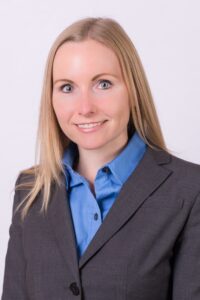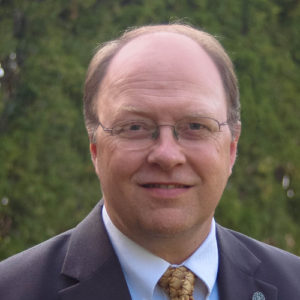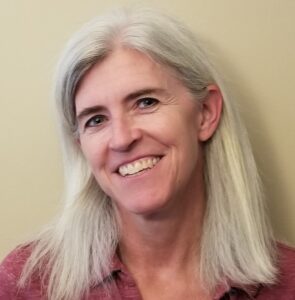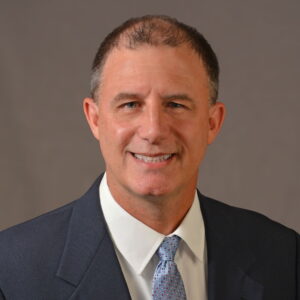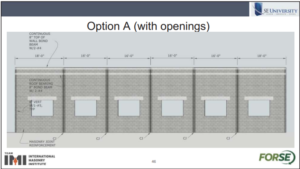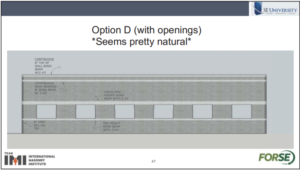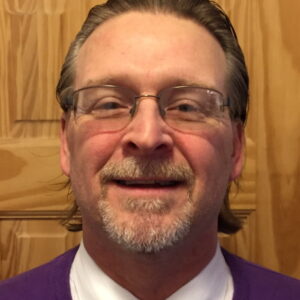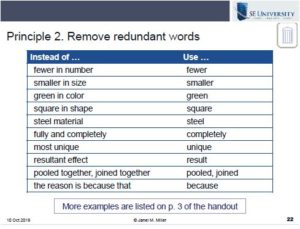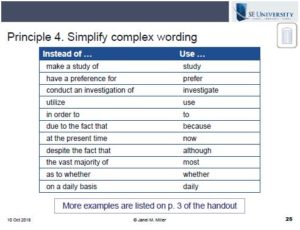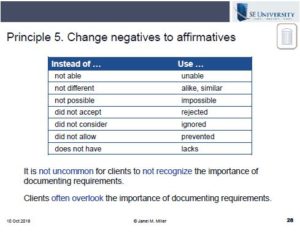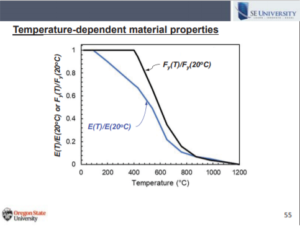In December 2021, SEU welcomed Don Scott, PE, SE, from PCS Structural Solutions, and Cherylyn Henry, PE, from Zapata, to present ASCE 7-16 Wind (plus Updates). Don and Cherylyn designated the SEI Futures Fund (https://www.asce.org/communities/institutes-and-technical-groups/structural-engineering-institute/futures-fund) for our SEU Speaker Inspires donation for the month.
Cherylyn shared “The SEI Futures Fund has provided an invaluable opportunity for students and young professionals to engage in the structural engineering profession. The Fund’s dedication to advancing our profession through the next generation of engineers has benefited practitioners and academics alike, through scholarships to attend Structures Congress and funding to serve on Codes and Standards Committees. I have witnessed the increased involvement of young professionals in our profession and it’s been incredibly exciting!”
Thank you, Don and Cherylyn, for helping structural engineers with your SEU session, and for your designation of the SEI Futures Fund as our SEU Speaker Inspires Organization of the Month!
SEU began the SEU Speaker Inspires program in 2015 as a way to “pay it forward”, enabling our speakers to designate a charity/organization of their choice for SEU to make a donation to help improve our world.
In November 2021, SEU welcomed Tim Holtermann, PE, SE, from Canam Steel, and Bruce Brothersen, PE, SE, from Vulcraft, on behalf of the Steel Joist Institute, to present Bridging and Steel Joists. Bruce designated Utah State University Civil Engineering Department Steel Bridge Team (https://engineering.usu.edu/cee/) for our SEU Speaker Inspires donation for the month.
Bruce shared “There is a lot more to the education of engineers than learning equations and running numbers. Anytime student engineers can be involved with projects that require innovation, collaboration and teamwork, like the bridge team as USU, a donation is a great investment in the engineering learning process.”
Thank you, Bruce, for helping structural engineers with your SEU session, and for your designation of the Utah State University Civil Engineering Department Steel Bridge Team as our SEU Speaker Inspires Organization of the Month!
SEU began the SEU Speaker Inspires program in 2015 as a way to “pay it forward”, enabling our speakers to designate a charity/organization of their choice for SEU to make a donation to help improve our world.
In October 2021, SEU welcomed Susan Burmeister, PE, from S2B Structural Consultants, to present Camber – Design and Construction. Susan designated Engineers without Borders (https://www.ewb-usa.org/) for our SEU Speaker Inspires donation for the month.
Engineers Without Borders USA builds a better world through engineering projects that empower communities to meet their basic human needs. Their highly skilled volunteers work with communities to find appropriate solutions for their infrastructure needs.
Thank you, Susan, for helping structural engineers with your SEU session, and for your designation of the Engineers without Borders as our SEU Speaker Inspires Organization of the Month!
SEU began the SEU Speaker Inspires program in 2015 as a way to “pay it forward”, enabling our speakers to designate a charity/organization of their choice for SEU to make a donation to help improve our world.
In September 2021, SE University welcomed Michael E. Sheridan, PE, SE, SECB, from Allen & Hoshall, to present Concrete Flat Plate Design. Mike designated Grace to You (https://www.gty.org/) for our SEU Speaker Inspires donation for the month.
Mike shared “My life has changed so dramatically in the last 30 years, when Jesus Christ intervened into my life with the truth of the gospel. This one major turning point in my life came through the truth found in Holy Scripture. John MacAruthur is the Chancellor of the Master’s College and Bible Teacher of the Grace to You ministry. I listen to Grace To You on the radio and podcasts daily and it is a significant augmentation to my ongoing Bible studies. So, whenever I get a chance to come into some extra money, I support their work at Grace to You. I hope this donation will help their work to continue in the sharing of Jesus Christ and the truth found in Him.”
Thank you, Mike, for helping structural engineers with your SE University session, and for your designation of Grace to You as our SEU Speaker Inspires Organization of the Month!
SE University began the SEU Speaker Inspires program in 2015 as a way to “pay it forward”, enabling our speakers to designate a charity/organization of their choice for SE University to make a donation to help improve our world.
Structural strengthening with externally bonded FRP has grown in popularity in recent years and provides a viable option for strengthening reinforced concrete for seismic applications, remediations or retrofit of existing structures. Many products are available on the market, and design guidance has been included in building codes for a number of years. Are you aware of the benefits and limitations of this type of external reinforcement?
In the July 2021 SE University session, Mark Jarvinen, PE, from Simpson Strong-Tie, presented Design Methodology and Calculations using Fiber-Reinforced Polymer Systems. Mark covered the design philosophy presented in ACI 440.2R-17 and ACI 318 and explained the strengthening limitations of FRP. Mark walked through the design methodology for FRP strengthening of a reinforced concrete beam for shear and flexure, as well as improving reinforced concrete column strength with FRP confinement.
Mark reviewed important considerations when using FRP for shear strengthening of reinforced concrete beams. FRP has been shown to increase the shear strength of existing reinforced concrete beams by wrapping or partially wrapping the beam. The FRP fiber is oriented transverse to the longitudinal axis or perpendicular to shear cracks in the member. Mark noted that shear cracks must be epoxy injected before the addition of FRP in order to reestablish any aggregate interlock that has been lost due to the cracks. This is imperative in order to consider the contribution of the concrete when determining the combined shear strength of the member. However, depending on the quality of the workmanship for the crack repair, the engineer may want to consider the implication on the shear strength provided by the concrete during design. Mark noted these cracks should be repaired using a product that meets ASTM C881, Type IV criteria for such a load bearing application.
Three types of FRP wrapping schemes can be used for shear strengthening of RC beams: completely wrapped, 3-sided or U-wrapped, or 2-sided wraps. These can be continuous or discrete strips. Mark advised that discreet strips allow for moisture migration which can be essential when working with beams exposed to the elements. FRP as well as the primer used before its application are vapor barriers and will contain moisture within the element if used continuously.
Follow along, as Mark walks through a design example using discrete FRP U-wraps to increase the shear strength of a reinforced concrete beam according to the guidelines in ACI 440.2R-17 and ACI 318 by watching this short 4 minute video:
After Mark determines that the reinforced shear strength is greater than the shear demand on the member, he checks the shear strengthening limit to ensure the total shear strength provided by the steel plus the FRP is not greater than the criteria provided in ACI 318 for steel alone according to ACI 440.2R-17, Sec. 11.4.3. Lastly, he determines how far into the span the discrete strips are needed by plotting the shear diagram of the member to determine where the strips are no longer necessary. For further guidance, click here to access the full design example shared by Mark to learn more about the design calculations and limit checks needed to use FRP for shear strengthening of reinforced concrete beams.
Are you stuck in an empirical rut when it comes to locating control joints in your structural masonry walls? Control joints at 25 feet on center with standard joint reinforcement is typical for many engineering projects, however, some buildings warrant a closer look at minimizing the use of control joints in order to achieve a more efficient wall and a cost effective solution.
In August 2021, Sam Rubenzer, PE, SE, from FORSE Consulting, presented Movement Joints for Masonry – Structural Edition for SE University. Sam explored the role of masonry movement joints in structural masonry walls, as well as the movement properties of masonry materials and structural systems. He explained the purpose of joints, what to consider when locating them, and who is responsible for locating them according to the code.
During the presentation, Sam gave an example with 5 options for horizontal reinforcement for the same basic wall design using the NCMA TEK guides 10-2D and 10-3. Using both the empirical approach and an engineered approach, the following 5 options were presented as viable options: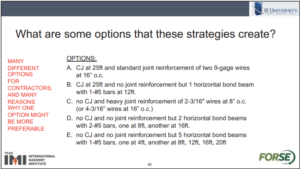
- Option A is a very commonly used empirical method for determining CJ spacing with typical joint reinforcement which most contractors would be very familiar with.
- Option B offers a similar CJ spacing while eliminating joint reinforcement in lieu of a single reinforced bond beam.
- Option C eliminates all control joints, but includes heavy joint reinforcement closely spaced.
- Option D also has no CJs but includes 2 reinforced bond beams.
- Option E eliminates all CJs but includes 5 reinforced bond beams at various heights.
All of these options satisfy the need for horizontal reinforcement to control cracking for this basic structural masonry wall, however one option may be preferable over another depending on the contractor doing the work or the need for additional structural capacity of a longer shear wall with less control joints.
These additional options become even more beneficial when considering more complicated walls with openings. Walls with repeated large openings spaced closely together become less efficient with control joints located between each opening. Thus, a continuous reinforced bond beam makes more sense to eliminate the use of control joints between each opening. As you can see from these two slides, the second option makes good sense, and offers a wall with less overall maintenance costs and would most likely cost less to construct.
Control joints are certainly necessary in certain situations where stress concentrations are likely to accumulate such as corners, intersecting walls, or a wall with a change in height. However, in many cases, minimizing the number of control joints can produce a more cost efficient wall design that is easier to construct and maintain over the life of the structure.
In July 2021, SE University welcomed Mark Jarvinen, PE, from Simpson Strong-Tie, to present Design Methodology and Calculations using Fiber-Reinforced Polymer Systems. Mark designated Forgotten Felines and Fidos (http://www.forgottenfelines.org/) for our SEU Speaker Inspires donation for the month.
Mark shared “Animals have no voice to advocate for their welfare or express their suffering and neglect. There are so many domesticated animals that need help that charitable organizations can’t reach them all. I respect and want to help those in our society that care for neglected and abused animals that so desperately need assistance. I chose Forgotten Felines and Fidos because of their unselfish commitment to caring for displaced cats and dogs in northwestern Lehigh County.”
Thank you, Mark, for helping structural engineers with your SE University session, and for your designation of Forgotten Felines and Fidos as our SEU Speaker Inspires Organization of the Month!
SE University began the SEU Speaker Inspires program in 2015 as a way to “pay it forward”, enabling our speakers to designate a charity/organization of their choice for SE University to make a donation to help improve our world.
24 Sep 2021
References for Masonry Movement Joint Design
Whose responsibility is it to locate control joints within a masonry structure? When is it appropriate to eliminate vertical control joints in structural masonry walls? Movement joints often are overlooked for their importance to the integrity of masonry structures, and many times are inadequately addressed in typical notes or specifications rather than physically identified on structural plans.
In August 2021, Sam Rubenzer, PE, SE, from FORSE Consulting, presented Movement Joints for Masonry – Structural Edition for SE University. Sam explored the role of masonry movement joints in structural masonry walls, as well as the movement properties of masonry materials and structural systems. He explained the purpose of joints and what to consider when locating them, as well as who is responsible for locating them according to the code.
Sam suggested several NCMA TEK guides that are useful for engineers who need further guidance for designing movement joints in structural masonry walls. All of these guides are available for FREE download from NCMA and the links are included here for your reference.
- NCMA TEK Guide 10-1A Crack Control in Concrete Masonry Walls addresses various causes of cracking and crack control strategies.
- NCMA TEK Guide 10-2D Control Joints for Concrete Masonry Walls – Empirical Method provides guidance for typical masonry buildings using a more empirical approach to locating movement joints.
- NCMA TEK Guide 10-3 Control Joints for Concrete Masonry Walls – Alternative Engineered Method explores a more engineered approach to movement joints and horizontal reinforcement.
- NCMA TEK Guide 10-4 Crack Control for Concrete Brick and Other Concrete Masonry Veneers applies to cracks resulting only from internal volume change of the concrete masonry veneer and does not address cracking due to externally applied loads.
Additionally, Sam referenced The Masonry Society’s TMS 402/602-16 Building Code Requirements and Specifications for Masonry Structures which is referenced by the International Building Code 2018 and is available to purchase through the above link. This document is essential when designing masonry structures and, as Sam noted, makes clear the responsibility lies with the designer to “indicate type and location of movement joints on the project drawings.”
Properly designed movement joints and horizontal reinforcement are critical for successful, crack-free masonry structures. These resources can be used for simple, straightforward designs or to explore additional options for the design of movement joints when an empirical approach falls short on your next masonry project.
26 Aug 2021
Principles for Concise Technical Writing
When was the last time you reflected on your writing process for emails, reports, or client updates? Have you considered ways to improve how your audience may perceive your document? Writing is truly an artform, and technical writing requires great skill to engage and inform readers without being unnecessarily complex and difficult for readers to understand. Producing clear and concise documents can help communicate technical information effectively and improve your esteem with your readers or clients.
In October 2018, Janel Miller, from the University of Wisconsin at Madison, gave a presentation on Improving Clarity, Coherence, and Conciseness in Technical Writing. Janel reviewed how to prepare coherent documents, engage and persuade readers, and apply principles of concise writing to improve clarity.
Janel gave excellent pointers on how to simplify writing to reduce the verbal complexity so readers can understand the technical complexity. She reviewed Joseph Williams’ five principles of concise writing from the text Style: Toward Clarity and Grace. These principles are
- Eliminate meaningless words
- Remove redundant words
- Delete what readers can infer
- Simplify complicated wording
- Change negative to affirmatives
After drafting the basic concepts of your document, take some time to edit using these basic principles to reduce wordiness and improve clarity. Most readers will appreciate a more concise version of your document which will improve your credibility with those readers.
Janel also provided helpful examples of these principles and ways to apply them in technical writing. Click on the following slides to print your copy for quick reference when preparing your own technical writings.
22 Aug 2021
Structural Fire Protection
Are you familiar with the significant changes and common failure modes that occur in a steel framed structure during a fire? For over a century, engineers have been using a prescriptive approach to protect steel structures and their occupants from a fire event. The International Building Code also permits the application of performance-based structural fire design to evaluate structural systems during a fire in a similar manner as other design loads are treated. Could any of your projects benefit from a structural fire engineering design rather than the typical prescribed fire protection?
In the June 2021 SE University session, Erica Fischer, PhD, PE, from Oregon State University, presented Structural Fire Protection. Erica explained the difference between a prescriptive fire protection design and structural fire engineering. Erica qualitatively showed how steel strength and stiffness change with increasing temperature and how boundary conditions for beams and columns can change during a fire event. She also presented a case study showing the benefits of employing fire engineering on a steel framed structure.
Structural fire engineering becomes a complex endeavor because of the temperature-dependent material properties and the potentially changing boundary conditions throughout a fire. As you might expect, as the temperature increases, both the yield stress and ultimate stress are decreasing and the elastic modulus is decreasing, however they are not decreasing uniformly. Erica included the following slide which shows the complexity of these changing mechanical material properties. As you can see, the yield stress remains constant until about 400 degrees, but the stiffness decreases at a much lower temperature and they are not decreasing linearly.
Additionally, not all steel components have the same degradation patterns of material properties. Steel bolts, for example, respond differently than mild steel to thermal increases. Thus, predicting the behavior of connections can be very complex and the controlling failure modes at elevated temperatures will be different than those at ambient temperature. To hear Erica explain the changes to boundary conditions throughout a fire, watch this short 3 minute video:
During her presentation, Erica suggested engineers refer to ASCE’s Structural Fire Engineering MOP 138 book to learn more about performance-based structural fire engineering. This book is available on ASCE’s website for purchase as an e-book or in print. This reference provides guidance on calculated design of a structure to withstand the thermal load effects of fire, including performance objectives and analysis techniques to quantify the structural response to thermal increases.

